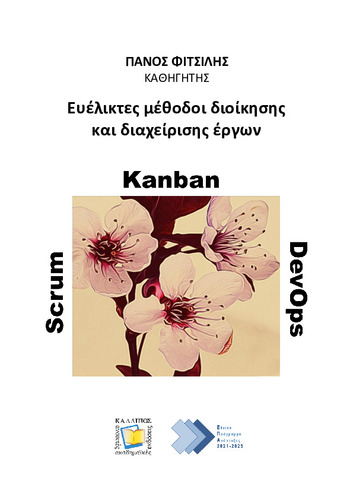| Title Details: | |
|
Agile management methods |
|
| Authors: |
Fitsilis, Panos |
| Subject: | MATHEMATICS AND COMPUTER SCIENCE > COMPUTER SCIENCE > SOFTWARE ENGINEERING MATHEMATICS AND COMPUTER SCIENCE > COMPUTER SCIENCE > SOFTWARE ENGINEERING > SOFTWARE PROCESSES MATHEMATICS AND COMPUTER SCIENCE > COMPUTER SCIENCE > SOFTWARE ENGINEERING > SOFTWARE PROJECT MANAGEMENT MATHEMATICS AND COMPUTER SCIENCE > COMPUTER SCIENCE > SOFTWARE ENGINEERING > REQUIREMENTS ENGINEERING MATHEMATICS AND COMPUTER SCIENCE > COMPUTER SCIENCE > SOFTWARE ENGINEERING > SOFTWARE DESIGN MATHEMATICS AND COMPUTER SCIENCE > COMPUTER SCIENCE > SOFTWARE ENGINEERING > SOFTWARE CONSTRUCTION |
| Keywords: |
Software projects
Agile management Software engineering Agile project management Scrum Kanban DevOps User stories |
| Description: | |
| Abstract: |
"Agile management methods" is a comprehensive guide to the principles and practices of agile management. The book is structured to provide readers with a thorough understanding of the philosophy and of the agile approach, as well as practical advice for implementing agile practices in a variety of settings.
The book begins by introducing the core values and principles of agile management, highlighting the importance of collaboration, flexibility and continuous improvement. It explains how these values and principles can be applied to different types of projects and organizational structures.
The second part of the book focuses on three key agile methods: Scrum, Kanban and DevOps. Readers will learn about the key features of each method, as well as how to use them effectively in different contexts. The author provides detailed guidance on how to set up and manage Scrum and Kanban boards, as well as how to implement DevOps practices to improve collaboration and efficiency.
The third part of the book covers practical topics of agility, such as user stories, effort estimation, prioritization, and agile metrics. Readers will learn how to write effective user stories, estimate project effort using agile methods, prioritize tasks based on value, and measure progress using agile metrics. The final part of the book explores how agile methods are used in different settings, including enterprises, public sector organizations, educational institutions, etc. The author provides real-world examples of successful agile implementations, as well as tips for overcoming common challenges and obstacles.
|
| Linguistic Editors: |
Kalliaras, Dimitrios |
| Graphic Editors: |
Koundouros, George |
| Type: |
Undergraduate textbook |
| Creation Date: | 03-04-2023 |
| Item Details: | |
| ISBN |
978-618-5726-73-7 |
| License: |
Attribution - NonCommercial - ShareAlike 4.0 International (CC BY-NC-SA 4.0) |
| DOI | http://dx.doi.org/10.57713/kallipos-196 |
| Handle | http://hdl.handle.net/11419/9306 |
| Bibliographic Reference: | Fitsilis, P. (2023). Agile management methods [Undergraduate textbook]. Kallipos, Open Academic Editions. https://dx.doi.org/10.57713/kallipos-196 |
| Language: |
Greek |
| Consists of: |
1. Introduction to agile methods 2. The philosophy of the agile approach 3. Agile principles 4. The Scrum process 5. Introduction to lean management – The Kanban method 6. The DevOps approach 7. Practical issues of applying agile methods 8. Agility in businesses |
| Number of pages |
322 |
| Publication Origin: |
Kallipos, Open Academic Editions |
| You can also view | |
| User comments | |
There are no published comments available! | |

